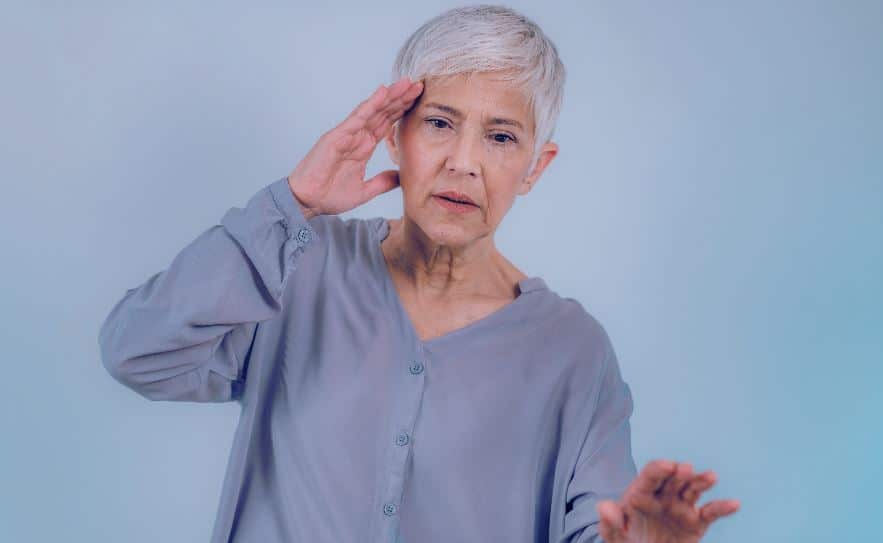It is widely accepted that BPPV is the most common peripheral vestibular disorder (inner ear) and it is the most common reason anyone would experience episodic brief vertigo.
Benign Paroxysmal Positional Vertigo
BPPV is an inner ear disorder where otoconia (inner ear crystals) migrate into the semicircular canals (head turn sensors), which results in episodes of recurrent brief vertigo associated with head movement. These otoconia migrate into the canal when lying down or with prolonged backward head tilt.
When one ear senses abnormal crystal motion in the associated canal following a head movement, this results in an involuntary jerking eye movement called nystagmus that an individual perceives as a sensation of vertigo. The nystagmus pattern differs based on which canal is affected as well as with the direction in which the otoconia are moving in the canal.
This is assessed clinically by lying the person down on their back with their head either turned to the right or to the left and with their head extended backward beneath their shoulders. The examiner then watches the individual’s eyes for nystagmus to determine if this appears to represent BPPV nystagmus. This is often referred to as the Dix-Hallpike exam, named after its inventors.
If nothing is observed during Dix-Hallpike, then the individual’s head is brought up to where the individual is flat on their back without backward head extension. Their head is then turned to the right or left while the examiner monitors for nystagmus. This is often referred to as the supine roll exam. It is important to note that there are many other potential causes of nystagmus and BPPV type nystagmus must meet certain criteria. An experienced examiner can differentiate between BPPV nystagmus and other types of nystagmus.
The most widely accepted theory for most cases BPPV is that of canalithiasis, or free floating otoconia in the semicircular canals. Most cases of BPPV involve the posterior semicircular canal (85-95%) which is usually easily resolved with canalith repositioning procedures such as the Epley maneuver.
Canalith repositioning procedures are utilizing time and gravity to migrate the otoconia from the affected canal back into the vestibule (large fluid filled area) from where they originated. Once returned to the vestibule, they should dissolve rapidly due to the fluid volume in this space. Because posterior canal BPPV is so common, many are simply unaware that BPPV can affect the other canals of the inner ear.
Less Common Forms of BPPV
Horizontal semicircular canal BPPV
BPPV affects the horizontal semicircular canal around 5-15% percent of the time, although anecdotally, we have seen an increase in the amount of cases of horizontal canal BPPV in recent years. This increase is likely related to individuals performing home canalith repositioning exercises incorrectly or poor identification of the affected canal to begin with.
The most common form of horizontal canal BPPV is thought to be free floating otoconia in the posterior arm of the horizontal semicircular canal. This results in a geotropic nystagmus, meaning the eyes jerk toward the ground following a head turn while supine. This variant also responds well to canalith repositioning procedures- one must just adopt a different repositioning procedure as the required head angle is different to migrate the otoconia out of the horizontal semicircular canal. One of the more commonly performed canalith repositioning procedures for horizontal canal BPPV is the Barbeque Roll.
A lesser percentage of the time the otoconia can migrate deep into the horizontal semicircular canal and can adhere to the sensor of the horizontal semicircular canal called the cupula. This results in an ageotropic nystagmus, meaning the eyes jerk away from the ground following a head turn while supine. This variant can be difficult to treat and we have personally had limited success in the past with some of the canalith repositioning maneuvers that claim to work for this rare variant of BPPV. Recently we have been experimenting with applying vibration to the mastoid bone (bone behind the ear) while performing a barbeque roll maneuver in an attempt to dislodge otoconia that are adherent to the canal sensor with some success. So far, we have had about a 75% success rate at rather quickly reducing or completely resolving symptoms.
Most cases of BPPV do not require vibration to be successful but we have found that utilizing skull vibration in conjunction with a canalith repositioning procedure is helpful for this variant.
These results are comparable to rates of success reported. If we are unable to completely resolve this positional nystagmus in the clinic, we recommend home canalith repositioning exercises with several seconds of vigorous head shaking prior to starting the repositioning exercise. Head shaking prior to treating this variant of BPPV has also been shown increase the effectiveness of the canalith repositioning procedure for this variant.
Anterior Canal BPPV
It is very unusual to have BPPV affecting the anterior semicircular canal (1-3% of cases). Due to the physiology, one would have to maintain a prolonged extreme head tilt backward or hang nearly upside down for a prolonged period for the otoconia to migrate into the anterior semicircular canal.
In our experience, most cases of anterior canal BPPV can be resolved with an Epley maneuver with extreme backward head tilt, with the head essentially upside down.
Multiple Canal BPPV
BPPV can occur in multiple canals at one time, which makes diagnosis and treatment a little more difficult. In the case of multi-canal BPPV we normally start treatment with the canal that appears to be the most affected. BPPV affecting multiple canals is more common following head trauma.
Conclusions
Most cases of BPPV are easy to treat with canalith repositioning once the correct canal has been identified. Although most cases of BPPV affect the posterior semicircular canal, it is important to recognize that other canals can be affected and the treatment should change based on the canal affected.

Brady Workman, AuD, is an audiologist in the Balance Disorders program at Wake Forest Baptist Health Center. He has authored several articles relating to balance and vestibular disorders as a regular contributor and co-editor of the Dizziness Depot at Hearing Health & Technology Matters. Brady received his doctorate of audiology from East Tennessee State University in 2018 and is licensed by the North Carolina Board of Examiners for Speech Language Pathologists and Audiologists and is a fellow of the American Academy of Audiology.






